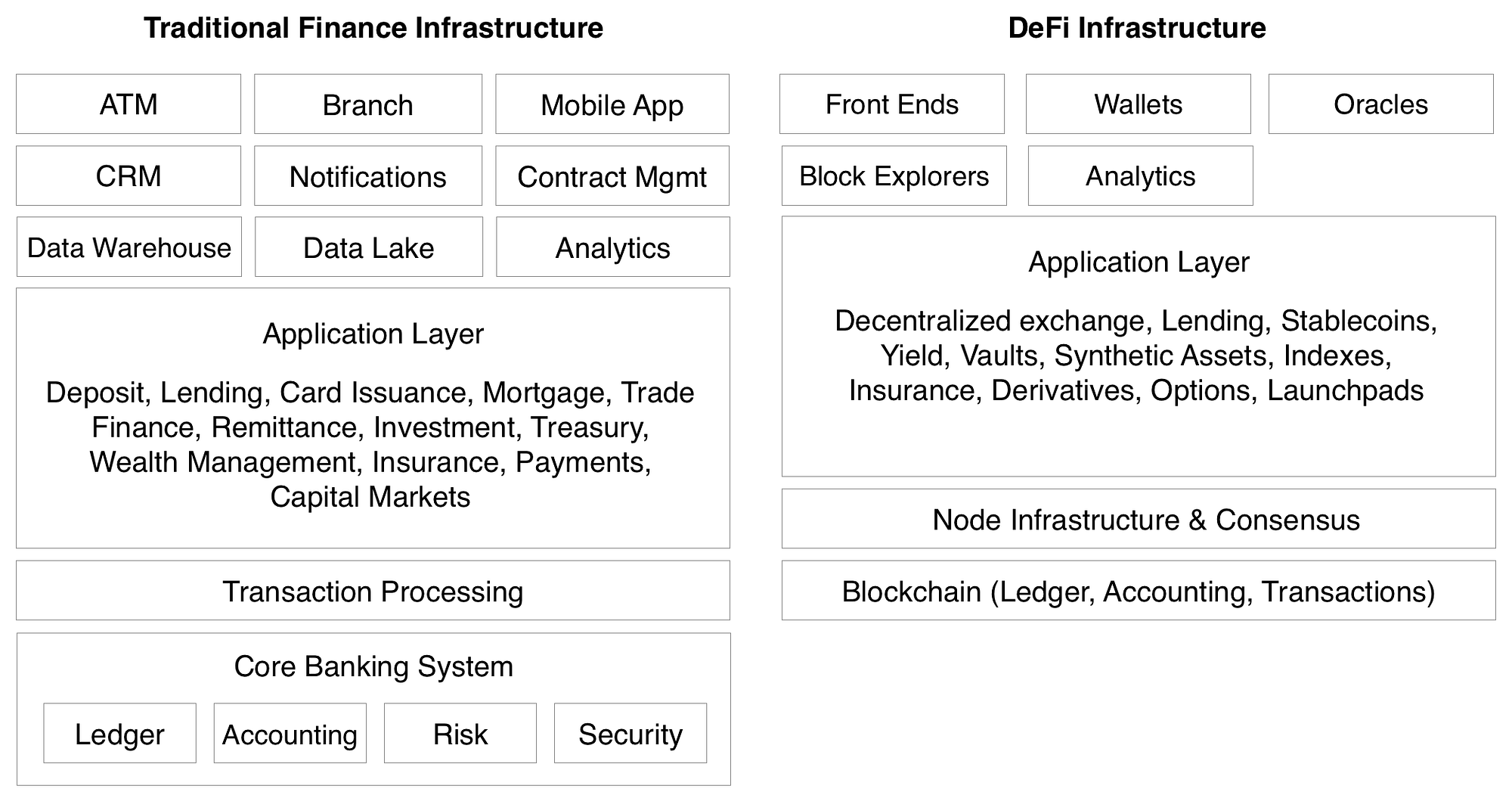
DeFi aims to replace the centralized legacy banking system by providing automated, decentralized financial instruments such as savings, loans, insurance and more to the masses.
At their core, the operations of DeFi dapps are not managed by an institution—instead the rules are written in code (in the form of smart contracts). Once the smart contract is deployed to the blockchain, DeFi dapps can run themselves with little to no human intervention. While traditional finance is built on trust, decentralized finance is built on code.
For the first time in history, a financial system is developing without intermediaries at a large scale. DeFi dApps represent a formidable alternative to traditional financial services. Internet users can participate in this new generation of financial services without the need for centralized permission structures and rent-seeking intermediaries.
So far, DeFi applications cannot compete in terms of security, speed, and ease of use with traditional finance solutions yet. But DeFi has produced real, working applications that have already managed to attract billions of capital. Those resources will be used to develop more competitive and user-friendly applications in the future.

TradFi vs DeFi infrastructure. Source: DeFi Infrastructure 101
In traditional finance:
In decentralized finance: